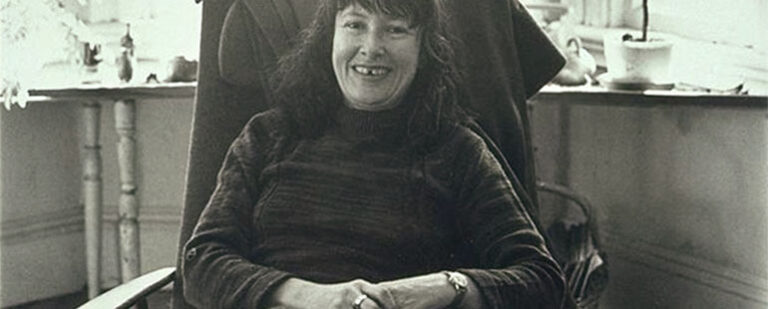The Dawn of the Queer Ecological Novel
In September, I stopped reading a novel. The novel is, by all accounts, quite good—praised for its experimental interiority, its reflection of 21st-century realities. But in September—as smoke blanketed my Oregon home, a hurricane flooded the town where my family lives, and a friend battled COVID—the comfortable, heteronormative, suburban life of the novel was as strange to me as if it were set on the moon.
I used to finish every novel I began. These days, a stack of unfinished novels grows beneath my window. I seek from these novels what I’ve always sought from fiction—thoughts on how to live. That question today is inextricable from questions about climate change—how do I live in a world marked by environmental destruction and shifting ecologies? Increasingly, the novels I begin, intent on nuclear family dynamics and personal epiphany, seem in dialogue with wholly other questions.
Instead, I’ve turned to essays on queer ecology, a discipline that combines queer theory and ecological criticism to ask how our perception of what is “natural” impacts our relationships with the environment and each other. In his 2010 essay “Queer Ecology,” Timothy Morton writes that an effective response to global warming requires recognizing three things. First, recognizing that there is no “nature” or “animal” separate from ourselves, “worrying away at the human-nonhuman boundary.” Second, recognizing the interdependence of species and environments. “Nothing exists independently,” he writes. Given current realities of global trade, colonization, and resource extraction, no place exists in isolation. Third, recognizing that language can “evoke . . . symbiosis,” and that we should carefully choose syntax that challenges the human-nonhuman boundary.
Six years later, Amitav Ghosh proposed almost identical strategies in The Great Derangement: Climate Change and the Unthinkable as ways novelists might overcome the “peculiar forms of resistance that climate change presents to what is now regarded as serious fiction.” Ghosh argues that the realist novel, so focused on probability, regularity, and “individual moral adventure,” is uniquely unsuited for the reality of climate change. To better reflect current realities, he suggests novelists do three things: challenge the “illusory apartness” of “Nature” from ourselves, challenge “discontinuities of place,” and find ways to include nonhuman “patterns of communication that are not linguistic.” These are queer ecological strategies.
Some contemporary North American novels already meaningfully engage climate change. Four of these—Jonny Appleseed, Stay and Fight, The Mere Wife, and On Earth We’re Briefly Gorgeous—use the strategies outlined by Ghosh to narrate lives shaped by the interrelated forces of colonization, resource extraction, and ecological destruction. None of these four novels directly reference climate change. They don’t need to. Climate change is present in mentions of flooding, wildfires, and failed tobacco crops. By making current ecological realities part of the fabric of their realism, these four novels outline one possible path toward a long-form fiction more responsive to climate change.
In Joshua Whitehead’s Jonny Appleseed (2018), “All the land is horny as fuck.” The Oji-Cree narrator of this novel is working to get home from Winnipeg to the Peguis First Nations Reservation. These two settings are linked by plot and by histories of colonization; the novel’s title invokes colonial history. Johnny Appleseed was a Christian missionary, responsible for the genocide of Indigenous people and the suppression of Indigenous concepts of sexuality and gender. The novel’s narrator, Jonny, shares his name. This novel is written in English, a colonial language. Through provocative wordplay, however, Jonny disrupts English sentences, carving out space for himself in a language designed to exclude him. In one section, Jonny’s kokum translates the Cree word manitowapow, after which Manitoba was named, to “the strait of the spirit.” Jonny riffs—“Why would the water want to straighten my spirit?” Jonny’s sexuality is reflected by the stream. The river is “an orgy of kissing streams, a hub of sex.” The strait isn’t straight. Jonny’s gender identity, too, finds reflection in the nonhuman world. As a teen he compares himself to a leech. “I too felt like a hermaphrodite: part boy, part girl.” As a cybersex worker in Winnipeg, Jonny says, “I always got a tickle out of how you could anthropomorphize yourself within the gay animal kingdom: ‘bear,’ ‘otter,’ ‘wolf,’ ‘fox,’ ‘cubs.’” He lists animals he can “morph into” on his profile and charges “an extra few bucks per session” for each one. This is a pragmatic indulgence of the fetish of Indigenous people as one with “nature.” It becomes something more when Jonny’s teenage romance begins dating a woman, and Jonny looks at a photo of her and thinks, “I could be that.” In this novel, queerness is capacious and fully a part of the “natural” world.
Madeline ffitch’s Stay and Fight (2019) also emphasizes the naturalness of queerness. Helen leaves urban Seattle for Appalachian Ohio, where she ends up homesteading with a lesbian couple on land bordered by an oil pipeline. Together, they raise a boy, Perley. Their life is inextricable from the nonhuman world. They eat acorn mash and squirrel meat, spend hours planting and harvesting, sleep with snakes; when a snakebite brings Child Protective Services to their door, the novel’s critique of institutions of normative “culture” becomes clear. The verbal defenses of Helen and her family break down against the heteronormative, institutional English of CPS (“nonrelative adults,” “biological mother”), and Perley is fostered. One of Perley’s mothers takes work out-of-state, constructing an oil pipeline, to raise the money needed to regain custody. Soon after, she realizes the oil pipeline she’s building is headed directly for the family’s land, threatening their home. The threat of the snakebite pales in comparison with this deadlier black snake of oil, of industry.
The destruction that accompanies industrial expansion is also on display in The Mere Wife (2018), Maria Dahvana Headley’s contemporary reimagining of Beowulf. This novel, of the four discussed here, most directly expands narration beyond human language and consciousness. A collective voice, which introduces itself as “the wilderness, the hidden river, and the stone caves,” narrates sections of the novel. This voice narrates events on a nonhuman time scale, describing the “deaths of continents and new islands born.” This collective voice frames the story of Dana Mills, a veteran returning to her rural mountain home to raise her son, Grendel. Their home is threatened by the sprawl of suburbia, and by its inhabitants, who see Grendel as an animal. Grendel was born with teeth, covered in hair; unlike the epic on which the novel is based, however, this book makes it clear that Grendel is no more animal than the men and women of the suburban neighborhood. Those suburban faces, by the novel’s end, are “cracking and showing what’s underneath, what’s always been there, coarse fur and gaping maws, whipping tails, scales, claws and hunger, and teeth, and teeth, and teeth.” “Everyone,” as one narrator states, “is an animal.”
Ocean Vuong’s On Earth We’re Briefly Gorgeous (2019) comes to a similar conclusion. Addressed to the narrator’s mother, a Vietnamese immigrant, Vuong’s novel repeatedly juxtaposes human and non-human narrative. The story of the narrator’s mother building a life in the US is interwoven with a story of monarch migration. “The monarchs pass the message down to their children,” Vuong writes. “The memory of family members lost from the initial winter was woven into their genes.” This is both a description of monarch migration and of the inheritance of trauma and loss. Later in the book, a young man’s overdose is foretold by a calf’s slaughter. A woman’s harrowing border crossing is interrupted by a scene in which five military men eat the brain of a macaque. “The brain of the macaque monkey,” Vuong writes, “is the closest, of any mammal, to a human . . . macaques are capable of self-doubt and introspection, traits once thought attributable only to humans.” In this way, the novel challenges the human-nonhuman boundary. It also questions the primacy of spoken and written language. Faced with language barriers—Vietnamese is not understood in the supermarket or at the mall; imperfect English is met with discrimination and shame—the narrator seeks other languages. “The hand,” he writes, describing a massage, “can be that third language that animates where the tongue falters.” Later, mourning the deaths of his young gay friends, Vuong writes, “my language is the language of an endangered species.” By the end of the novel, the human-animal boundary has collapsed completely. “Our lives,” Vuong states, “are in themselves the lives of animals.”
In each of these novels, queer or genderqueer characters move through multiple settings, finding refuge not in the urban spaces traditionally associated with queer identity, but in rural spaces and wilderness (a tobacco barn in Hartford, a large land tract in rural Ohio, a mountain cave, a riverside campground). Each novel challenges normative conceptions of “nature,” exploring one final principle from “Queer Ecology”: “the way in which queerness, in its variegated forms, is installed in biological substance . . . not just a blip in history.” Taken together, they begin to outline qualities of a queer ecological novel, one more than capable of reflecting our shifting relations to our environment and to each other.
The need for a queer ecological novel is increasingly apparent, as it becomes difficult to imagine any story, any life, unaffected by the reality of climate change. Ghosh argues that contemporary novels unconcerned with climate change, like the one I left unfinished in September, are engaged in “modes of concealment that prevent people from recognizing the realities of their plight.” He further argues that this concealment characterizes most art and literature of our time. If this is true, the four books described above stand in sharp contrast to that trend. They not only recognize the reality of climate change but also offer nuanced answers to the urgent question of how to continue in face of it.
This piece was originally published on November 20, 2020.


